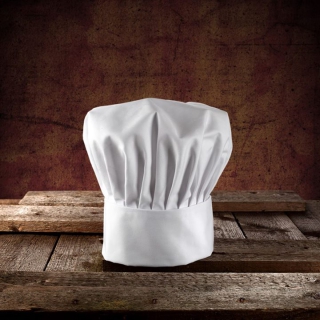
The Intersection of a Toque Blanche, Eggs and the “King of Chefs and Chef of Kings”
04 December 2016The modern-day chef’s uniform and hat can be traced back to the 16th century but some of the history is a little murky.
By Lisa Parrish, GMC Editor
Most chefs today don the traditional uniform of a white double-breasted jacket, hounds tooth black-and-white patterned pants with a tall toque blanche. But, have you thought about why? And, really, what does this have to do with the number of egg dishes a chef has mastered?
Let’s start with the toque blanche, a tall, pleated hat that can be traced back 400 years to the 16th century. According to an article published in the National Culinary Review, chefs often sought hiding places in Orthodox monasteries to escape persecution and wore gowns and tall hats to blend in with their rescuers.
Move forward in time to the middle 1800’s and the first celebrity chef, Frenchman Marie-Antoine Carême, formalized the attire. The fastidious “King of Chefs and Chef of Kings” wrote that white signified cleanliness and the size of the hat indicated the kitchen staff person’s rank. It is said Carême’s hat was 18 inches tall. And, at one time, a chef’s toque blanches contained 100 pleats and was starched or propped up from the inside to stand tall.
But, why does the hat have pleats? A common culinary myth says: The number pleats signifies the number of egg dishes mastered by the chef. This legend has been well-researched yet no definitive source has been discovered. However, eggs have been a culinary staple for hundreds of years and they are vital in cooking.
John Howeth, senior vice president of foodservice and egg product marketing at the American Egg Board, said, “Whether or not the 100 pleats in a chef's hat or toque were actually designed with egg preparation in mind—and the American Egg Board is partial to this explanation—the story does highlight the indispensability of eggs in cooking. There are thousands of ways to cook an egg and numerous ways eggs provide incredible functionality."
Finally, another Frenchman Georges Auguste Escoffier (who is also credited with the title “King of Chefs and Chef of Kings”) truly formalized the chef’s garments into what we are most familiar with today. The double-breasted jacket that can be reversed to hide stains while it’s thick cotton material protects the chef from boiling liquids and the stove’s heat. The necktie, which is more decorative today, originally was used to soak sweat that inevitably came from working in the inferno-like kitchens of the past. And, of course the uniform includes the toque blanche, although admittedly it is smaller, fewer pleats and some are even made of paper these days.
Today’s chefs can thank these two culinary titans with not only creating French haute cuisine, which is still taught throughout culinary institutions, but also to their creation of a classic uniform still worn in kitchens all over the world.
(Marie-Antoine Carême is also the namesake for the Antonin Carême Medal recently awarded to Chef Adam Wiener. Read the story by clicking here.)
